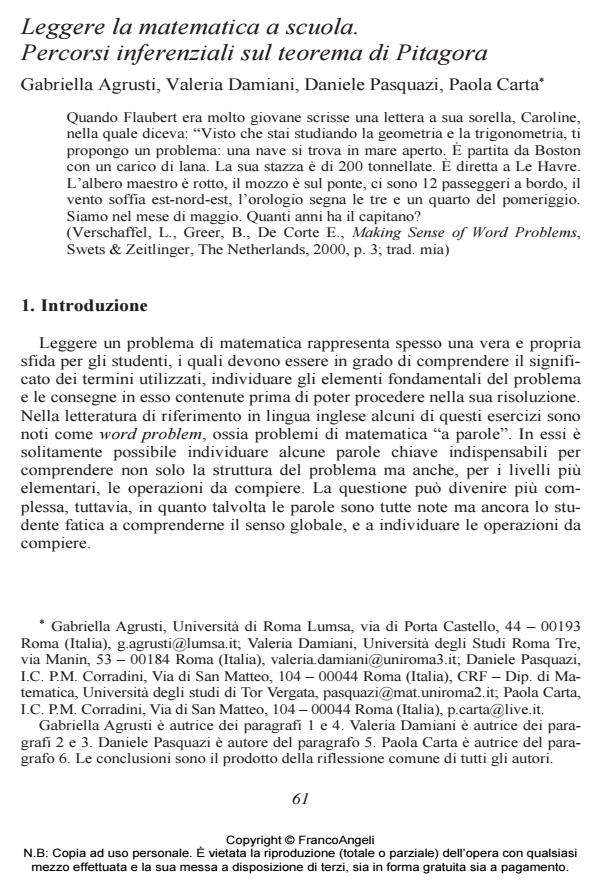Leggere la matematica a scuola. Percorsi inferenziali sul teorema di Pitagora
Titolo Rivista CADMO
Autori/Curatori Gabriella Agrusti, Valeria Damiani, Daniele Pasquazi
Anno di pubblicazione 2015 Fascicolo 2015/1
Lingua Italiano Numero pagine 25 P. 61-85 Dimensione file 310 KB
DOI 10.3280/CAD2015-001007
Il DOI è il codice a barre della proprietà intellettuale: per saperne di più
clicca qui
Qui sotto puoi vedere in anteprima la prima pagina di questo articolo.
Se questo articolo ti interessa, lo puoi acquistare (e scaricare in formato pdf) seguendo le facili indicazioni per acquistare il download credit. Acquista Download Credits per scaricare questo Articolo in formato PDF

FrancoAngeli è membro della Publishers International Linking Association, Inc (PILA)associazione indipendente e non profit per facilitare (attraverso i servizi tecnologici implementati da CrossRef.org) l’accesso degli studiosi ai contenuti digitali nelle pubblicazioni professionali e scientifiche
Reading a mathematical problem can be often challenging for students. To be successful, they need to understand the words, transposing their meaning on an abstract level, to identify the relations stated in the problem and the task requested. Even if the meaning of the words is known, the case can be given that the student cannot grab the global meaning, nor inferring useful implications to solve the problem. This article offers an overview on reading comprehension issues linked to mathematical texts, and then proposes a set of common mistakes made by young readers, emerged in a first exploratory field experience carried out with grade 7 students. Given that learning activities were carried out on the Pythagorean Theorem, specific attention was devoted to the transposition of words into geometrical figures.
Parole chiave:Reading comprehension, mathematics, Pythagorean Theorem, inferences, lower secondary school.
- History and Epistemology in Mathematics Education Nicla Palladino, Daniele Pasquazi, pp.115 (ISBN:978-3-031-86869-6)
- Povertà educativa e sviluppo professionale degli insegnanti: un modello d'intervento Maurizio Gentile, Daniele Pasquazi, in CADMO 1/2025 pp.82
DOI: 10.3280/CAD2025-001006 - Pat-in-the-Loop: Declarative Knowledge for Controlling Neural Networks Dario Onorati, Pierfrancesco Tommasino, Leonardo Ranaldi, Francesca Fallucchi, Fabio Massimo Zanzotto, in Future Internet /2020 pp.218
DOI: 10.3390/fi12120218
Gabriella Agrusti, Valeria Damiani, Daniele Pasquazi, Leggere la matematica a scuola. Percorsi inferenziali sul teorema di Pitagora in "CADMO" 1/2015, pp 61-85, DOI: 10.3280/CAD2015-001007